Stop the wrap! Bandage use in horses now forbidden?
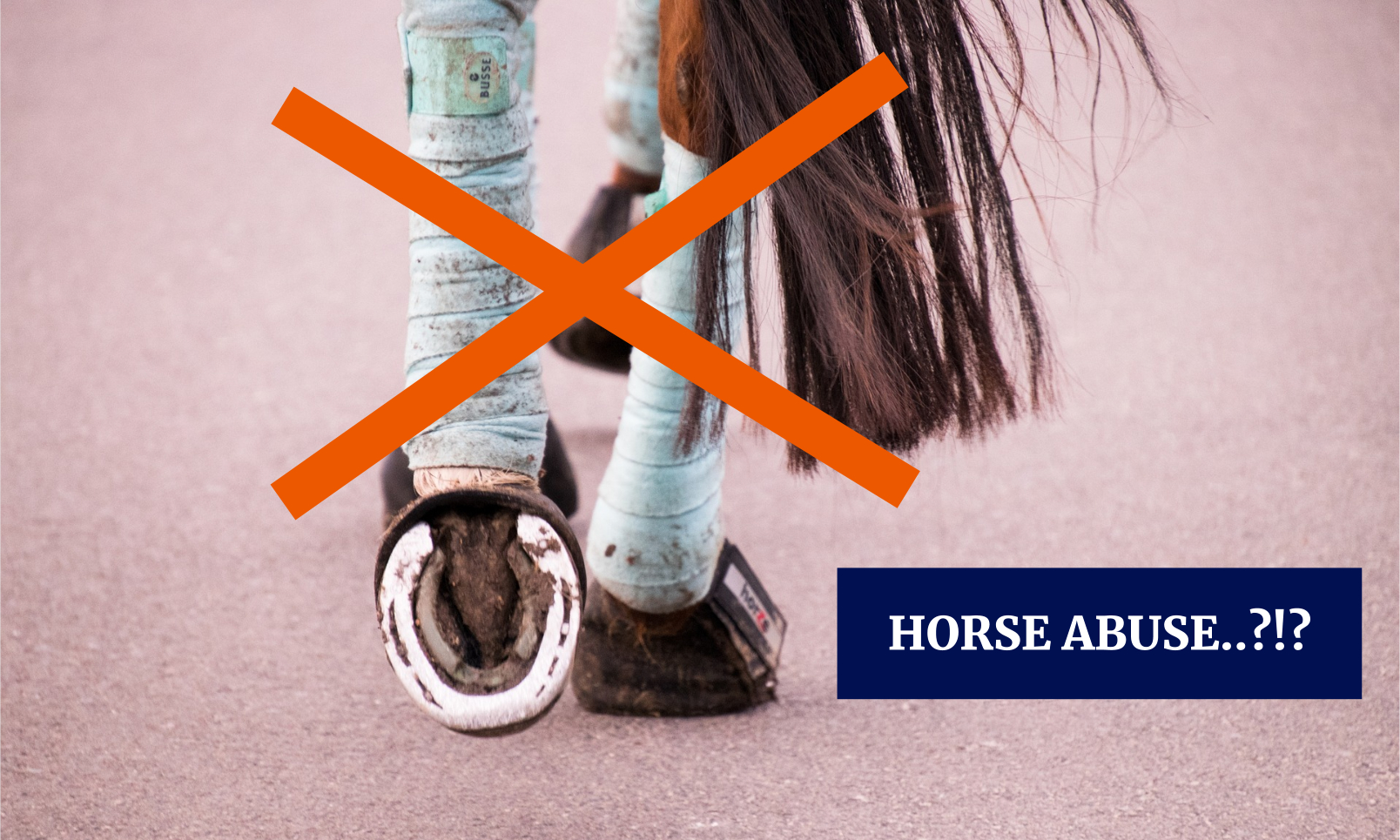
Is bandage use in horses now forbidden?!? Should you stop wrapping up your horse?
In this blog post you will find out all about the background of this development. And many tips about what you can do instead, to keep your horse healthy and happy.
Fashion comes and goes in the horse world, just like in the ‘real world’.
Especially for dressage horses the fashion is now to use bandages. It seems like the more of the leg is covered in wraps, the better. (Preferably color-coordinated with the riders outfit, the saddle pad, the fly bonnet, and so on…) Even small ponies going for a little walk are seen with wraps on all legs.
The Dutch National Federation has from this spring on forbidden the use of bandages in all competition areas. Even when warming up! (Read more here.)
Their reason to ‘stop the wrap’: Research has shown clearly that bandages not only are useless in protecting horse legs – the use of bandages will actually damage horses!
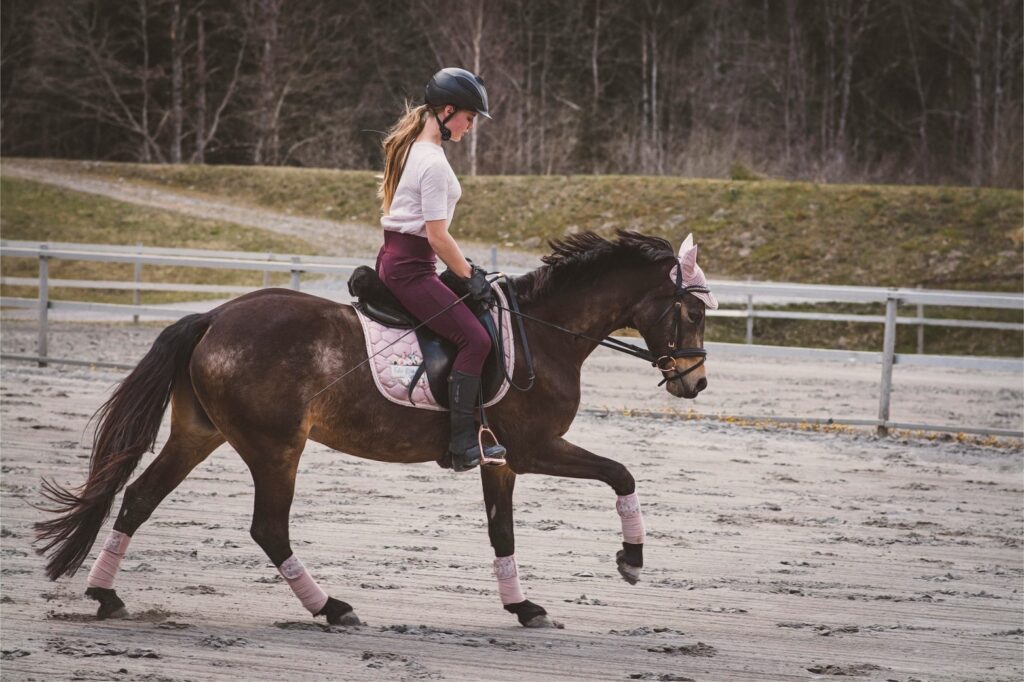
Color-coordinated bandages might look cute… but is that worth damaging your horse?
Stop the wrap – it gets too hot!
The main issue is that the temperature inside the horses’ legs will get very high if you use bandages. It will get so high that cell damage will occur in the tendons. In other words: the use of bandages can easily cause tendon damage!
Protective leg boots will also increase leg temperature. How much depends on the type of boot and how loose they are fitted.
The temperature gets the highest when you use bandages. Fleece bandages are the worst.
Do you always hose down your horse’s legs with cold water after a ride?
Unfortunately that will not help. The damage is already done…
Bandages always forbidden in dressage competitions
In jumping and eventing competitions it has always been allowed to use different types of leg protection, including bandages. Although most jumping and eventing riders prefer to use hard leg protection boots.
In dressage competitions, using bandages and protective leg boots has always been forbidden during the dressage test itself. But they have been allowed during warm-up, prize presentations and such.
However, in ‘the old days’ thin white bandages became popular for use during stallion shows, special show performances and such. The reason was not just to make the horse look ‘fancy’, but mainly to even out any leg markings.
For example: a horse that has 3 dark legs and one high white ‘stocking’ can look as if he is moving unlevel, because your eye gets distracted by the one white leg.
And if several horses are in a show program together, white bandages will make the legs look more the same.
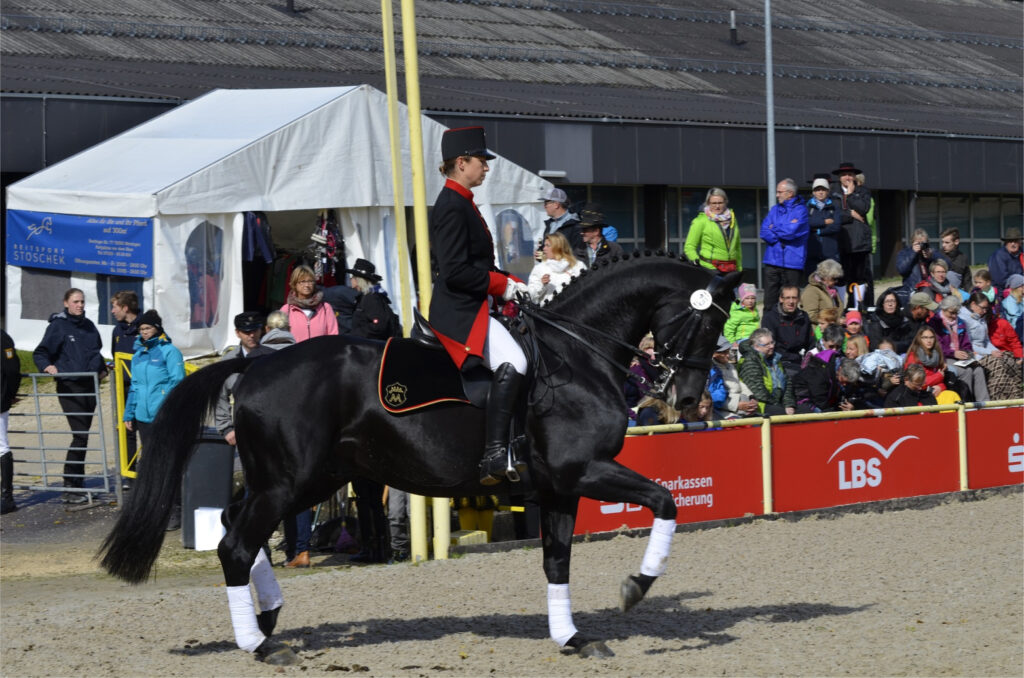
White bandages on all four legs used to be something you would only see during stallion shows and other show performances.
Bandaging correctly is difficult!
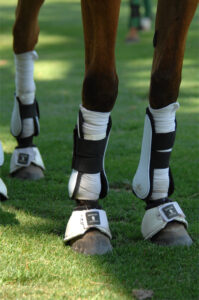
Putting bandages on the right way is not easy!
The use of bandages has always come with very clear warnings.
They should be put on very carefully and with totally even pressure, to avoid tendon damage.
And they should not be left on any longer than strictly necessary.
Top riders would often not allow their grooms to put on bandages, but insist on doing it themselves – to be sure it was done correctly.
That knowledge seems to have been lost today. Many riders and stables will wrap up every horse, every day, for every ride. And often the whole night, too – with ‘standing wraps’.
And it’s not just thin bandages around the cannon bone. The ‘new fashion’ is to ride with very thick pads and wraps that extend down over the fetlock and up over the knee.
Bandages also run the risk of loosening while you ride, and maybe even getting tangled in the horses’ legs. It used to be common that the straps of bandages actually were sewn to the bandage before strenuous competitions. Just to make sure nothing would come loose.
And since bandages are made of soft fabric, they do not offer any real protection against blows, cuts or horses striking into themselves.
That’s also why it’s common to use hard leg protection boots for jumping and eventing horses, and not bandages.
Negative effects of bandages
To sum up the negative effects of bandages:
- They do not protect the legs against strikes, blows etc.
- Bandages also do not protect the leg from ‘overextending’, sprains or other injuries.
- They will overheat the legs and can thereby create tendon problems (cooling afterwards is too late).
- It’s hard to put bandages on evenly and with the correct pressure.
- There is always a risk a bandage will come loose and trip the horse.
- And especially for dressage horses: if your horse is not allowed to use bandages during the test itself – why would you then make the horse ‘dependent’ on them in all your training…?
Bandage use in horses now forbidden?
Is it now forbidden to use bandages on your horse’s legs everywhere in the world?
No. This rule change only applies to The Netherlands. And only for horses that are at competitions.
But the fact that one of the foremost horse countries in the world now takes this step, should make all riders think about if they should ‘stop the wrap’, too.
After all: the research is clear. The use of bandages has a high risk of CAUSING injuries in your horse, instead of protecting him!
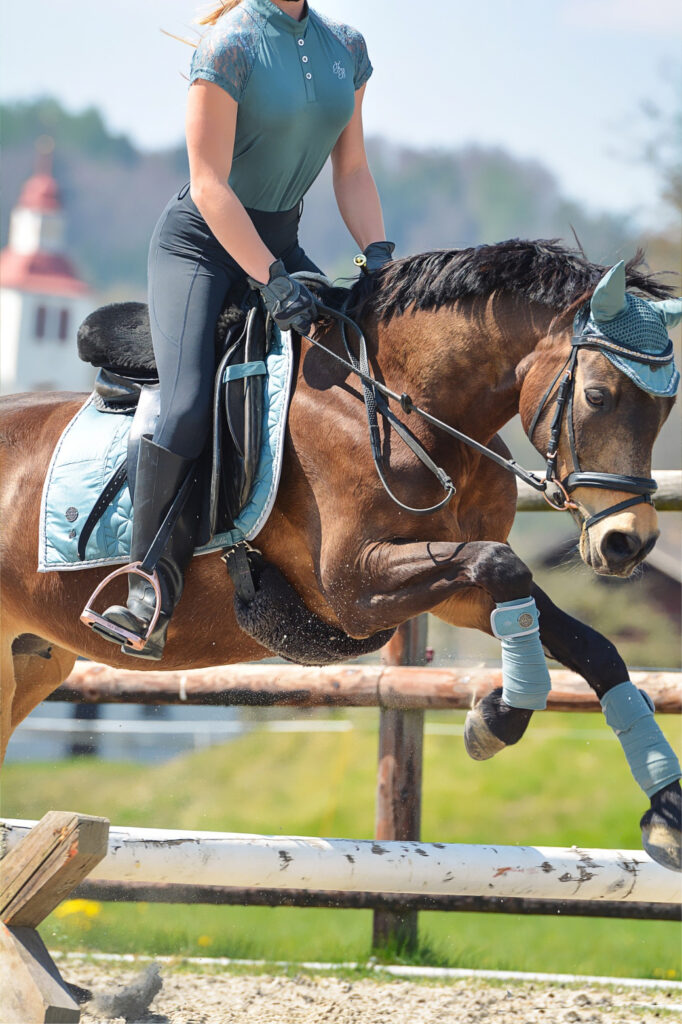
It’s not forbidden to use bandages (yet). But it’s a good idea to think before you use them!
What to do instead?
If you decide to stop the wrap – what can you do instead? Here are some tips.
- The most obvious: only use leg protection if your horse really, really needs it. And not just as habit. Maybe you started using protection for a young, gangly horse – but now he is grown and moves much more balanced?
- Are you worried about your horse striking himself? Taking off the shoes will reduce that risk a lot! And after all, these days barefoot horses can be Olympic champions. So, there is no reason at all that every competition horse needs shoes.
- If your horse absolutely needs some kind of leg protection: use leg boots (brushing boots) instead of bandages. And then those boots should have good air circulation and not be too tight.
- Adapt your riding and training. Warm up carefully, adjust your speed, give your horse frequent breaks and don’t ride unnecessary abrupt changes of tempo or direction. A horse that gets tired will stumble or strike itself more easily.
- Be careful which surfaces you choose to ride on. Ideally not too hard or too deep – and of course, not slippery.
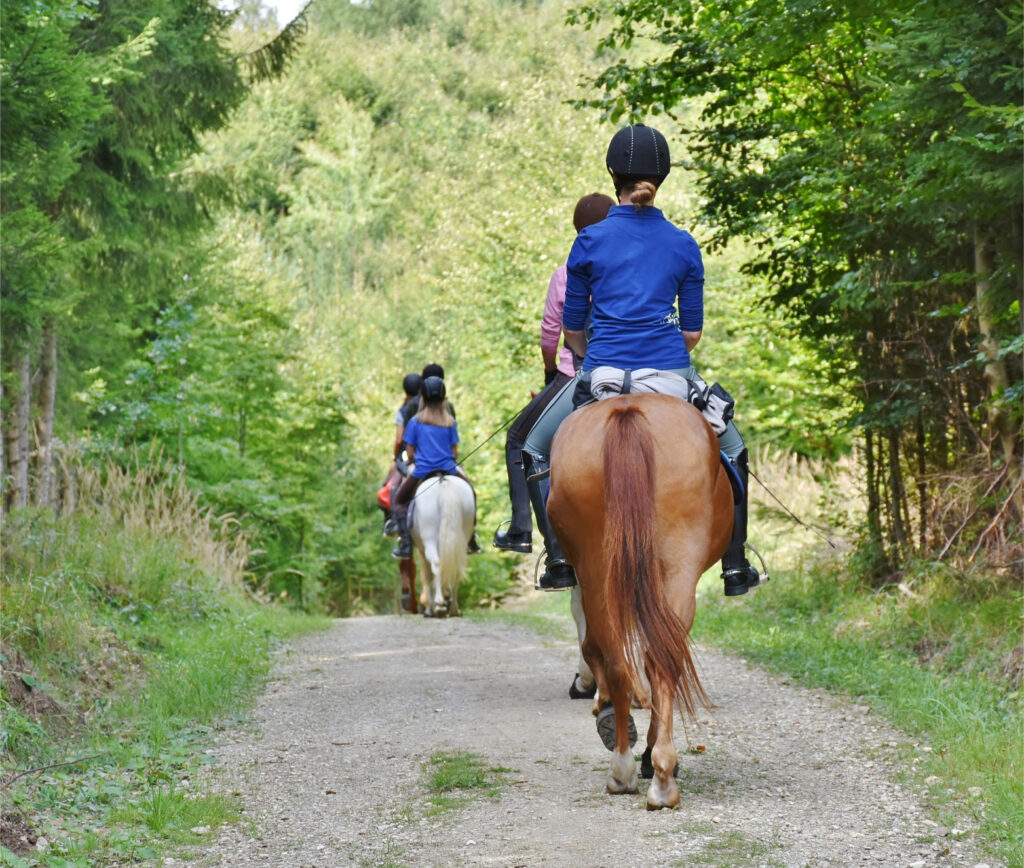
Using bandages will not protect your horse. What will help: Taking the shoes off, training carefully and choosing good surfaces to ride on.
Does your horse need stable wraps?
For those horses who are ‘wrapped up’ during the night because their legs fill, look at these solutions:
- Taking off the shoes and creating a better-functioning hoof will increase blood circulation in the whole leg. This alone will solve the ‘filling problem’ that many horses have.
- Increase movement. Make sure the horse is outside in a large enough paddock, preferably with a buddy, as many hours as possible. Even better: let your horse live outside day and night.
- Take a good look at your training. Are you increasing the workload gradually enough? Can you cut down on high intensity exercise like jumping? What surfaces are you working your horse on – maybe they are too hard or too deep?
And remember: Even if your horse shows no problems now – it is high time to stop the wrap!
Don’t miss our next blog post!
Don’t risk missing out – sign up here, and our next blog posts will automatically land in your inbox.
BONUS: you will get this FREE E-BOOK! With 10 easy tips how you can be a better rider, already today. Because our horses deserve that we are the best riders we can be.
Any questions or comments? Feel free to share with us in the comments.
We love feedback and will try to get back to you as quickly as possible.






